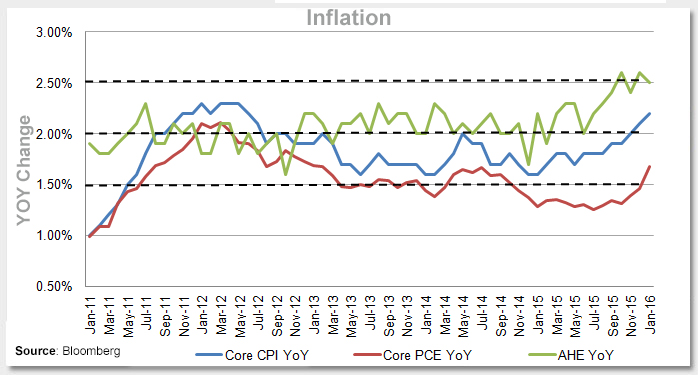Since my last Chart of Week post, the market has staged an impressive comeback. Now, we are basically trading unchanged for the year. The reversal has been powerful and has caused a lot of performance anxiety because market participants have cut back risk in January and February. As someone who is bearish, I am surprised but not too surprised. This happened twice last year, in January and October. The market structure has worsened since the financial crisis, with the sharp reduction of bank balance sheet capacity and the increased growth of rule-based funds such as CTAs (Commodity Trading Advisor), risk-parity, and volatility-controlled funds. This market structure is prone to V-shaped moves.
During last week’s Federal Reserve (Fed) meeting, the Fed surprised the market by being more dovish than expected. This is almost a replay of the meeting held on March 18, 2015; the Fed gave a similar dovish talk and lowered the dot plots last March. Back then, the risk market rallied sharply and the U.S. 2-year and 3-year Treasury increased 15 basis points that day. Eventually, the Fed still moved ahead and started the hiking cycle in December.
I recently attended an event with Ben Bernanke. His intelligence is impressive, and he is funny when he is not in the limelight. One thing he said (I cannot remember the exact words) is: Talk is a more important tool than action for central bankers. He used Draghi’s “whatever it takes” speech as an example. I think the current Fed is doing the same thing here. By talking dovish, the Fed eased financial conditions without any action. The Fed lowered dot plots from four hikes to two hikes for the year, but, the Fed fund futures have only priced in one to two hikes for 2016 all along.
One thing worth noting is the recent increase of inflation, if you look at today’s chart, you can see Core CPI, Core PCE and average hourly earnings are all showing an uptrend. If this trend sustains, the Fed has to make a choice between overheating the economy or hiking the rate more quickly. Neither of these two scenarios is good for asset returns.
Key Takeaway: Risk rally is the pain trade because of market positioning. The risk rally, the rotation from growth to value, dollar weakness and the reversal of the commodities are causing widespread underperformance of active managers. However, this doesn’t mean we should buy for the short-term gain. The risk-reward in the market is not favorable. Stay cautious.
The material provided here is for informational use only. The views expressed are those of the author, and do not necessarily reflect the views of Penn Mutual Asset Management.
This material is for informational use only. The views expressed are those of the author, and do not necessarily reflect the views of Penn Mutual Asset Management. This material is not intended to be relied upon as a forecast, research or investment advice, and it is not a recommendation, offer or solicitation to buy or sell any securities or to adopt any investment strategy.
Opinions and statements of financial market trends that are based on current market conditions constitute judgment of the author and are subject to change without notice. The information and opinions contained in this material are derived from sources deemed to be reliable but should not be assumed to be accurate or complete. Statements that reflect projections or expectations of future financial or economic performance of the markets may be considered forward-looking statements. Actual results may differ significantly. Any forecasts contained in this material are based on various estimates and assumptions, and there can be no assurance that such estimates or assumptions will prove accurate.
Investing involves risk, including possible loss of principal. Past performance is no guarantee of future results. All information referenced in preparation of this material has been obtained from sources believed to be reliable, but accuracy and completeness are not guaranteed. There is no representation or warranty as to the accuracy of the information and Penn Mutual Asset Management shall have no liability for decisions based upon such information.
High-Yield bonds are subject to greater fluctuations in value and risk of loss of income and principal. Investing in higher yielding, lower rated corporate bonds have a greater risk of price fluctuations and loss of principal and income than U.S. Treasury bonds and bills. Government securities offer a higher degree of safety and are guaranteed as to the timely payment of principal and interest if held to maturity.
All trademarks are the property of their respective owners. This material may not be reproduced in whole or in part in any form, or referred to in any other publication, without express written permission.


